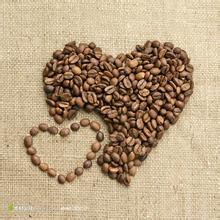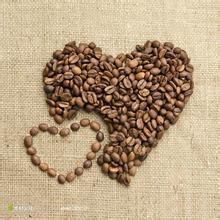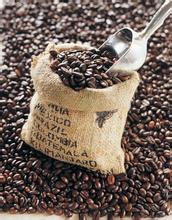What is the most basic knowledge of introduction to coffee?
Roasted raw beans specifically explain the fat contained in 11.3% 2.5% fat 11.7% 13.2% coffee, which plays a very important role in flavor, mainly acidic fat and volatile fat. The strength and type of acid in acidic fat varies with each other. Volatile fat is the main source of coffee aroma, it can emit about 40 kinds of aromatic substances, once the fat in roasted coffee beans comes into contact with air. In addition to chemical changes, the taste and smell have also become very bad. The main source of 11.8% ~ 12.8% calorie of protein is not high, because most of the protein will not be dissolved, so the intake of nutrition is limited, and coffee has become a sacred product for dieters. Sugar 8.0% ~ 1.8% in unsweetened coffee, in addition to feeling the bitterness of the coffee, the sour taste of tannin also has some sweetness, that is, sugar, which is mostly converted into caramel after roasting, bringing a unique brown to the coffee. subtly combine with tannin acid to produce a slight sweetness. Caffeine 1.3% ~ 1.3% is one of the plant xanthamins (animal muscle ingredients), which has the same properties as the cocoa halogen contained in cocoa and green tea. The percentage reduction after baking is minimal, and the bitterness in coffee is made by caffeine. Tannic acid 6.0% ~ 4.0% becomes a yellowish powder after extraction, which is easy to dissolve into water and produce pyroic acid as soon as it is boiled and decomposed, making the taste worse. If you brew well and leave it for a few hours: the color of the coffee liquid is thicker than when it was just soaked, and it is not tasty enough, so there is the saying that "it is best to finish it as soon as possible." 4.2% of minerals are lime, iron, sulfur, phosphorus, sodium carbonate, chlorine, silicon and so on. 28.6% ~ 29.6% essence part 17.1% ~ 29.6% can be divided into several kinds, accounting for nearly 1/3 of baked beans, but it is not known what the effect is. The main coffee producing country: Brazil accounts for about 1/3 of the world's coffee production. Although it occupies a very important position in the whole coffee trading market, because the Brazilian coffee processing industry has adopted the price strategy from the very beginning, that is, low price and massive planting, the coffee produced is of average quality and less excellent grade. it is generally considered to be an indispensable coffee bean in mixed blending. Colombia: Colombia is the second largest coffee producer in the world, accounting for about 12% of the world's total coffee production. Although the output ranking is lower than that of Brazil, its coffee beans are of good quality. Coffee trees are planted in the highlands, cultivated in a small area, harvested carefully, and processed in a wet manner, the coffee produced is beautiful in quality, rich in flavor and unique in flavor, which is very suitable for drinking alone or mixing. Costa Rica: the producing area can be divided into three areas: the Pacific coast, the Atlantic coast and the middle zone. All the coffee beans are quite large, fragrant with sour flavor, are first-class coffee beans, have a high rating. Hawaii: on the island of Cona, off the south coast of Hawaii, there is a well-known and traditional Hawaiian coffee-Hawaiian Cona. This kind of coffee bean grows only on Connor Island and is the only coffee produced in the United States. The volcanic rock and soil on the coast of Connor breeds this fragrant, mellow coffee. The top-grade Connor has a slight wine aroma in its moderate acidity, with a very rich palate and irresistible aromas. If you like to enjoy the voluptuous aroma of coffee before tasting coffee, or if you think Indonesian coffee is too strong, African coffee is too strong, and Central and South American coffee is too strong, Kang Na will be your best choice. Get it. Indonesia: Sumatra and Java are the main producing areas. Sumatra coffee is best known for its rich and palatable high-end manning. On the other hand, the Arabica produced in Java has a good sour taste and is loved by the Dutch. Jamaica: Jamaica is the origin of the world's "Blue Mountain Coffee". The quality of coffee produced in Jamaica is polarized. the quality of coffee grown in the lowlands is very common and is only used to make scale. Why don't you take 5? Knock on the boy? Do you still want to travel to the emperor? BR > Kenya: located in Kenya near East Africa, the coffee beans planted are high-quality Arabica seeds. The size of beans is medium to large, very thick and delicious, with moderate acidity. The grade is divided into seven grades according to the size of coffee beans and six grades according to the taste.

Important Notice :
前街咖啡 FrontStreet Coffee has moved to new addredd:
FrontStreet Coffee Address: 315,Donghua East Road,GuangZhou
Tel:020 38364473
- Prev

How many kinds of coffee are there and which kind of coffee is the most popular
Blue Mountain Coffee: the origin of Jamaica, named after the Blue Mountains surrounded by the Caribbean Sea sour, sweet, bitter taste are very harmonious and have excellent flavor and aroma, suitable for individual coffee, suitable for medium roasting. Java coffee: Origin: Sumatra, Indonesia. It belongs to Arabica. After baking, the bitter taste is extremely strong and the aroma is very light, without sour taste. Conna Coffee: Origin: Hawaii Conna area Fire
- Next

The coffee producing area of Costa Rica
High-quality Costa Rican coffee is called extra hard beans, and this kind of coffee can grow at an altitude of more than 1500 meters. Altitude has always been a problem for coffee growers. The higher the altitude, the better the coffee beans, not only because the higher altitude can increase the acidity of the coffee beans and thus increase the flavor, but also because the night temperature at the higher altitude is lower, which makes the trees grow slowly.
Related
- Does Rose Summer choose Blue, Green or Red? Detailed explanation of Rose Summer Coffee plots and Classification in Panamanian Jade Manor
- What is the difference between the origin, producing area, processing plant, cooperative and manor of coffee beans?
- How fine does the espresso powder fit? how to grind the espresso?
- Sca coffee roasting degree color card coffee roasting degree 8 roasting color values what do you mean?
- The practice of lattes: how to make lattes at home
- Introduction to Indonesian Fine Coffee beans-- Java Coffee producing area of Indonesian Arabica Coffee
- How much will the flavor of light and medium roasted rose summer be expressed? What baking level is rose summer suitable for?
- Introduction to the characteristics of washing, sun-drying or wet-planing coffee commonly used in Mantenin, Indonesia
- Price characteristics of Arabica Coffee Bean Starbucks introduction to Manning Coffee Bean Taste producing area Variety Manor
- What is the authentic Yega flavor? What are the flavor characteristics of the really excellent Yejasuffi coffee beans?

